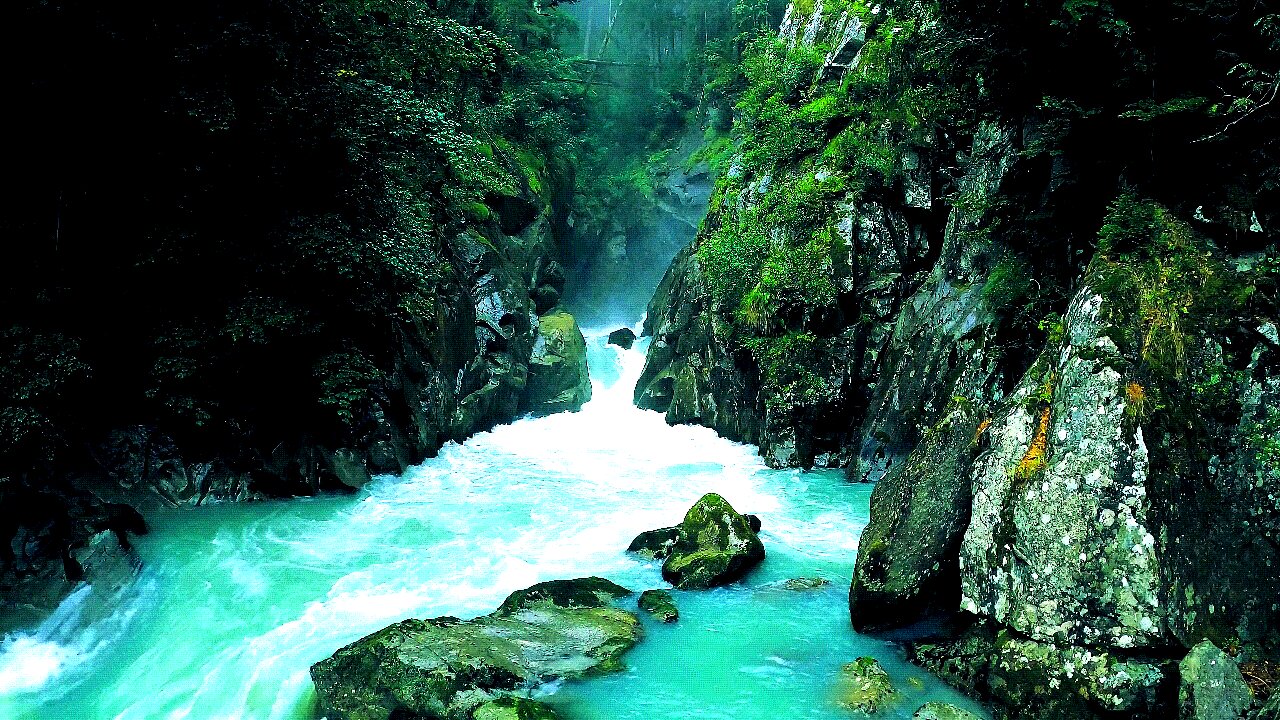Premium Only Content

The Effortless cascade streams mysteriously spouting over the stones
The waterfall is stunningly beautiful like aquatic blue as it flows gracefully downstream. A waterfall is a river or other body of water's steep fall over a rocky ledge into a plunge pool below. Waterfalls are also called cascades.
The process of erosion, the wearing away of earth, plays an important part in the formation of waterfalls. Waterfalls themselves also contribute to erosion.
Often, waterfalls form as streams flow from soft rock to hard rock. This happens both laterally (as a stream flows across the earth) and vertically (as the stream drops in a waterfall). In both cases, the soft rock erodes, leaving a hard ledge over which the stream falls.
A fall line is the imaginary line along which parallel rivers plunge as they flow from uplands to lowlands. Many waterfalls in an area help geologists and hydrologists determine a region's fall line and underlying rock structure.
As a stream flows, it carries sediment. The sediment can be microscopic silt, pebbles, or even boulders. Sediment can erode stream beds made of soft rock, such as sandstone or limestone. Eventually, the stream's channel cuts so deep into the stream bed that only a harder rock, such as granite, remains. Waterfalls develop as these granite formations form cliffs and ledges.
A stream's velocity increases as it nears a waterfall, increasing the amount of erosion taking place. The movement of water at the top of a waterfall can erode rocks to be very flat and smooth. Rushing water and sediment topple over the waterfall, eroding the plunge pool at the base. The crashing flow of the water may also create powerful whirlpools that erode the rock of the plunge pool beneath them.
The resulting erosion at the base of a waterfall can be very dramatic, and cause the waterfall to "recede." The area behind the waterfall is worn away, creating a hollow, cave-like structure called a "rock shelter." Eventually, the rocky ledge (called the outcropping) may tumble down, sending boulders into the stream bed and plunge pool below. This causes the waterfall to "recede" many meters upstream. The waterfall erosion process starts again, breaking down the boulders of the former outcropping.
Erosion is just one process that can form waterfalls. A waterfall may form across a fault, or crack in the Earth’s surface. An earthquake, landslide, glacier, or volcano may also disrupt stream beds and help create waterfalls.
-
 1:37
1:37
Expert Videos Magnetic Media
4 years agoDolphin kisses a little girl and brings her a gift
67444 -
 2:21
2:21
Gozwaldi
4 years agoPiano Music: cascade
12 -
 LIVE
LIVE
LFA TV
21 hours agoLIVE & BREAKING NEWS! | MONDAY 12/01/25
1,068 watching -
 UPCOMING
UPCOMING
John Crump Live
2 hours agoThe Return Of John Crump Live
15 -
 22:49
22:49
The Quartering
1 hour agoBlack Friday Debt Bonanza, Youtube Bans Millions, South Park Roasts Bill Burr, MrBeast Outs Youtube
5.84K3 -
 LIVE
LIVE
Dr Disrespect
5 hours ago🔴LIVE - DR DISRESPECT - REDSEC - BATTLEFIELD ISN'T READY FOR US
1,966 watching -
 LIVE
LIVE
The HotSeat With Todd Spears
1 hour agoEP 217: God Bless America, Why Not America Bless GOD? Pt 1
685 watching -
 1:35:44
1:35:44
Tucker Carlson
3 hours agoJohn Rich on Diddy, Demons, the Antichrist, How to Hear God, and His War on Child Predators
60.3K97 -
 1:09:52
1:09:52
The White House
6 hours agoPress Secretary Karoline Leavitt Briefs Members of the Media, Dec. 1, 2025
41K14 -
 1:18:25
1:18:25
The Quartering
3 hours agoBlack Friday Debt Bonanza, Youtube Bans Millions, South Park Roasts Bill Burr, MrBeast Outs Youtube
104K25